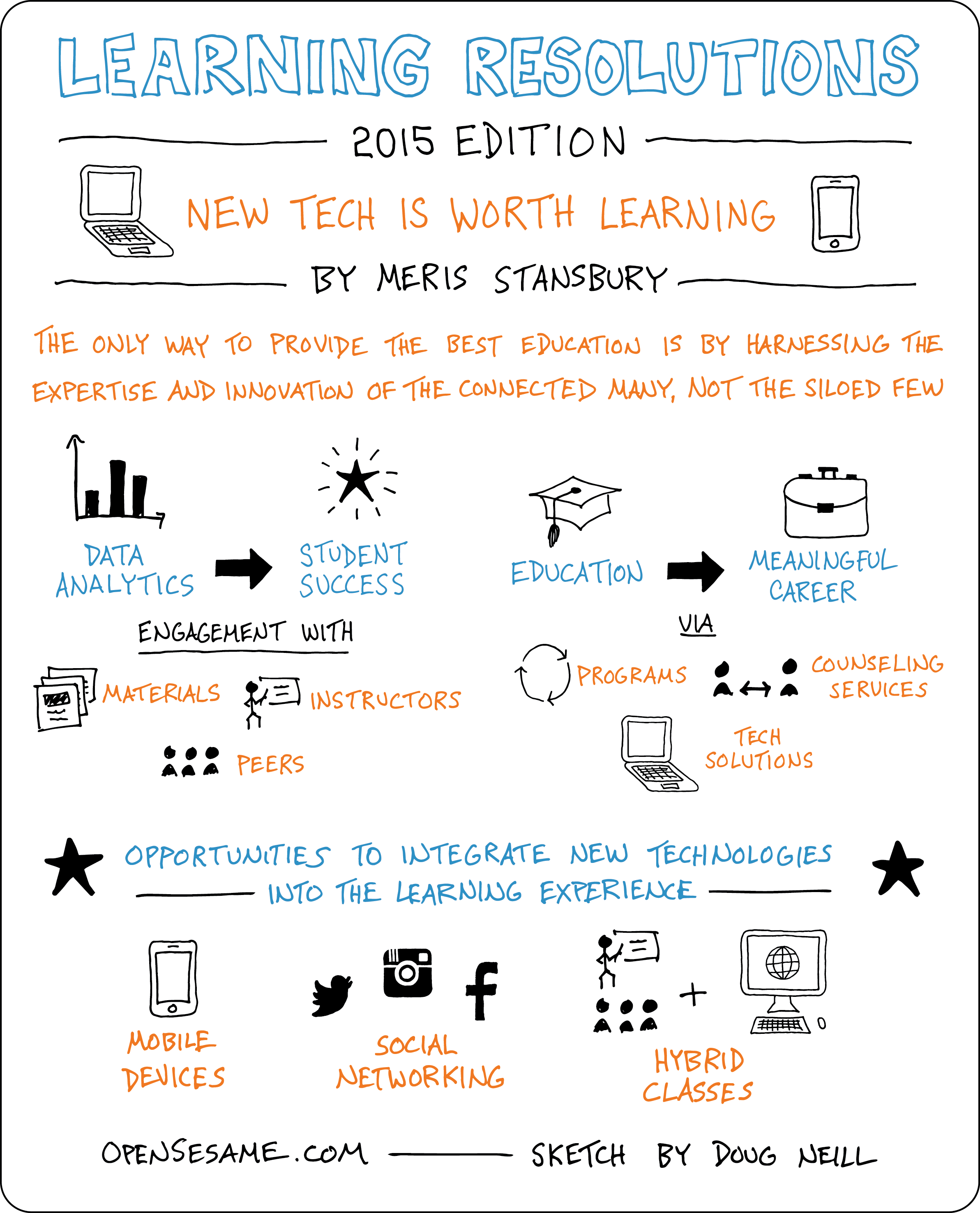Learning Resolutions: New Tech is Worth Learning


2014 was the year for online learning, not just because of growing access, but because relevance and quality were championed thanks to the inclusion of predictive analytics, collaborative tools for peer and educator communication, and the application of adaptive technology for assessments—all characteristics that help a seemingly sterile method of learning come alive through personalization and connection.
This emphasis on connection, and the technology tools that allow for collaboration, will continue to grow in 2015, as everyone from teachers and administrators to IT and university presidents realize that in this increasingly connected world, the only way to provide the best education is by harnessing the expertise and innovative ideas that come from the many, not the siloed few.
I believe that the next few years also will usher in an increased investment in data analytics—specifically in the expertise needed to utilize it for action towards improving outcomes. Already, Stanford is calling for a new field in academics, ‘Education Data Analytics,’ to be created within the next year or two to help higher-ed institutions take the large amount of data currently aggregated and create pathways that can predict each unique student’s postsecondary success. However, for 2015, I see colleges and universities using simple, and not always perfect, data provided by personalized learning platforms to be able to determine smaller, but no less important, conclusions; such as “Is this student likely to pass or fail this course?” by looking at data that reveals a student’s engagement with course materials, engagement with instructors, and engagement with peers.
Finally, I see institutions increasingly offering more programs (both on-campus and online), technology solutions and counseling services toward helping students find meaningful careers post-graduation. From the increase in university-business partnerships to the explosion of virtual career fairs, and from innovative systems like Fidelis Education’s Learning Relationship Management (LRM) system to the adoption of non-traditional credentials (competency-based education, digital badges, etc.), more institutions—both private and public—are realizing the need to make postsecondary education relevant beyond the traditional four-year degree.
Believe it or not, there are still many out there who see the inclusion of mobile devices, social networking, and hybrid classes as daunting—and they wouldn’t necessarily be wrong! But with a potential gain of an extraordinarily rich connection to resources (human and otherwise), isn’t it worth a little time and complacency lost? I will be repeating this advice to myself many times throughout 2015 as I learn to do things like better communicate with my readers on Twitter and join ed-tech online forums. After all, if my 65-year-old mother can join an online community for knitting, surely I can learn how to use WebEx.

Meris Stansbury is the Managing Editor for eCampus News, a higher-ed tech innovation online and digital publication based in Bethesda, Maryland. Originally from Ohio, Meris graduated from Kenyon College in 2006 with a B.A. in English Literature. When she's not busy covering education, she's in her kitchen setting off the smoke alarm or thinking of new ideas for her “I’ll get to it when I can” sci-fi novel.



